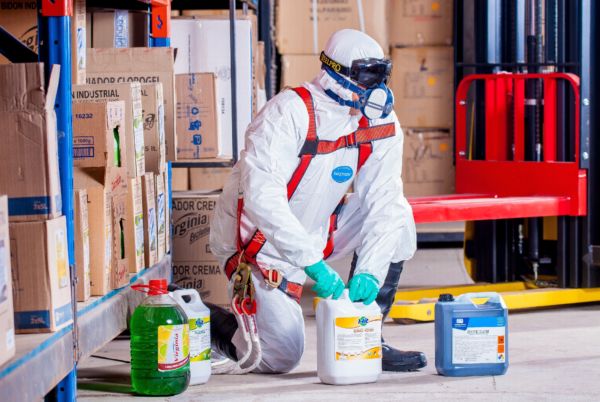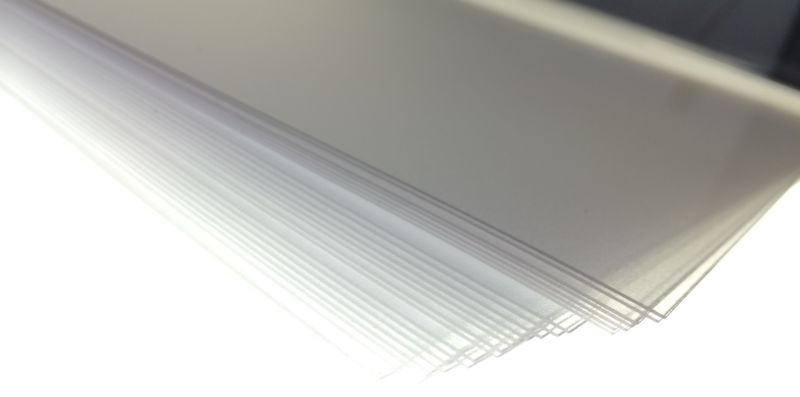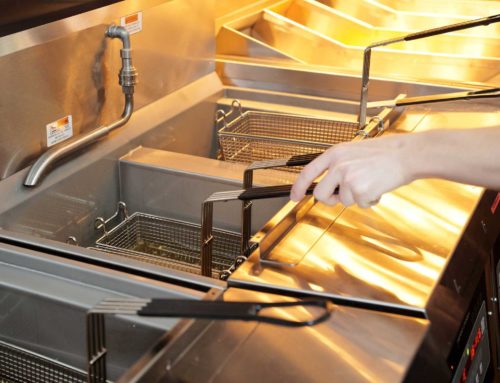There are two things we know to be true: People in distress call for Superman, and harsh environments call for heavy-duty decals. Extreme temperatures and outdoor exposure can pose significant problems to the lifespan of your graphics, but corrosive chemicals do the most damage in the least amount of time (the Lex Luthor, if you will). Today, we’re reviewing the basics (and the acids, ba dum-tss) to help you learn how to combat corrosive solutions.

For the harshest chemicals…
Industrial, medical, and aircraft environments use abrasive chemicals and solvents for both cleaning and creating chemical bonds. Solutions such as acetone, methyl ethyl ketone, and hydrochloric acid break down many typical materials used for basic labels and overlays. Instead, we recommend using hard-coated polyester and polycarbonate films. They’ll protect graphics underneath a clear substrate, and the hard coat will provide the additional chemical resistance that uncoated materials lack. Think of it as an Iron Man suit on your graphic film.
Graphics that will interact with severe, Thanos-level solvents should be made from anodized aluminum, which is practically impervious to chemicals and corrosion.

For the lesser chemicals…
Graphics that come in contact with less intense, Loki-level chemicals still require some form of corrosion resistance. Common household cleaners can break down or haze decals. Polyester is inherently chemical resistant and makes a great choice for labels and overlays that need a little more protection. Even laminating vinyl decals with a polyester overlaminate can help them withstand light cleaning for years to come.
For graphics exposed to sunscreen and DEET…
Skincare products are the most unaccounted-for chemicals to protect your decals against. Sunscreen and DEET-based insect repellents can wreak havoc on hard-coated materials by staining, hazing, and accelerating their disintegration. If your product may be exposed to either of these two substances, make sure to use a hard-coated product specifically formulated to resist them, like Tekra’s Marnot Advanced.

Specialty hardcoated polyester is the best option for overlays that are subject to harsh chemicals.
What about graphics printed on very chemical-resistant plastic, like polypropylene?
Printable polymer films are less ideal than you’d think. Because they are so chemically inert, they must be pretreated to accept printing or lamination. It’s not that the material won’t hold up but that the ink that will fail. Adding lamination to the print will increase ink’s durability. In the end, the ink’s resistance properties rely on what lies between it and the chemicals.
1st surface printing occurs when ink is printed on top of the material, and 2nd surface printing, also known as subsurface printing, occurs when ink is printed on the back of the material.
Generally, polyester is the way to go when choosing a standard base material for your chemically resistant label or overlay. The addition of a hardcoat can prevent the breakdown or failure of a part if it will be exposed to certain solvents.
When you’re ready to get those super-powered decals into production, give Graphics Output a shout at 260-748-0577 or sales@gographicsoutput.com. We’ll be armed and ready when you need us.



